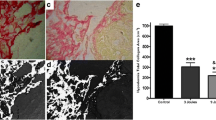Abstract
Continuous low-intensity laser irradiation (LILI) affects the state of cells in culture, including their proliferation rate. Data collected with various cell models vary significantly, but most studies have reported positive effects of LILI on cell proliferation. The effects of continuous infrared LILI (835 nm) was studied using three independent different melanoma cell lines. The LILI effect was shown to strongly depend on the irradiation dose. Higher doses (230 kJ/m2) significantly suppressed the cell growth. A further increase in LILI dose led to a significant cytotoxic effect, which increased disproportionately quickly with the increasing light intensity. Human mesenchymal stem cells (MSCs) were found to be significantly more resistant to the cytotoxic effect of higher-dose LILI. Importantly, the effects were not due to the difference in culture conditions. Control experiments showed that 15 non-melanoma tumor cell lines were more resistant to LILI than melanoma cells. Selective sensitivity of melanoma cells to LILI in vitro was assumed to provide a basis for LILI-based approaches to melanoma treatment.









Similar content being viewed by others
REFERENCES
Illarionov V.E. 1994. Tekhnika i metodiki protsedur lazernoi terapii (Laser Therapy Procedures: Techniques and Methodology). Moscow: Meditsina.
Baxter G.D. 1994. Therapeutic Lasers: Theory and Practice. London: Churchill Livingstone.
Tuner J., Hode L. 1999. Low Level Laser Therapy— Clinical Practice and Scientific Background. Spjutvagen: Prima Books,.
Balakirev S.A., Useinov A.A. 2007. Quantum therapy in child oncology. Detskaya Onkologiya. 1, 15‒19.
Karu T.I. 2007. Ten Lectures on Basic Science of Laser Phototheraphy. Spjutvagen: Prima Books.
Schartinger V.H., Galvan O., Riechelmann H., Dudás J. 2012. Differential responses of fibroblasts, non-neoplastic epithelial cells, and oral carcinoma cells to low-level laser therapy. Supp. Care Cancer. 20, 523–529.
Pinheiro A.L., Carneiro N.S., Vieira A.L., Brugnera A.Jr., Zanin F.A., Barros R.A., Silva O.S. 2002. Effects of low-level laser therapy on malignant cells: An in vitro study. J. Clin. Laser Med. Surg. 20, 23–26.
Frigo L., Luppi J.S., Favero G.M., Maria D.A., Penna S.C., Bjordal J.M., Bensadoun R.J., Lopes-Martins R.A. 2009. The effect of low-level laser irradiation (In-Ga-Al-AsP ‒ 660 nm) on melanoma in vitro and in vivo. BMC Cancer. 9, 404.
Renno A.C., McDonnell P.A., Parizotto N.A., Laakso E.L. 2007. The effects of laser irradiation on osteoblast and osteosarcoma cell proliferation and differentiation in vitro. Photomed. Laser Surg. 25, 275–280.
Castro J.L., Pinheiro A.L., Werneck C.E., Soares C.P. 2005. The effect of laser therapy on the proliferation of oral KB carcinoma cells: An in vitro study. Photomed. Laser Surg. 23, 586–589.
Yu W., Naim J.O., Lanzafame R.J. 1994. The effect of laser irradiation on the release of bFGF from 3T3 fibroblasts. Photochem. Photobiol. 59, 167‒170.
Chudnovskii V.M., Leonova G.N., Skopinov S.A., Drozdov A.L., Yusupov V.I. 2002. Biologicheskie modeli i fizicheskie mekhanizmy lazernoi terapii (Biological Models and Physical Mechanisms of Laser Therapy). Vladivostok: Dal’nauka.
Mognato M., Squizzato F., Facchin F., Zaghetto L., Corti L. 2004. Cell growth modulation of human cells irradiated in vitro with low-level laser therapy. Photomed. Laser Surg. 22, 523‒526.
Werneck C.E., Pinheiro A.L., Pacheco M.T., Soares C.P., De Castro J.L. 2005. Laser light is capable of inducing proliferation of carcinoma cells in culture: A spectroscopic in vitro study. Photomed. Laser Surg. 23, 300‒303.
Dastanpour S., Beitollahi J., Saber K. 2015. The effect of low-level laser therapy on human leukemic cells. J. Lasers Med. Sci. 6, 74‒79.
Andreeva N.V., Zotov K.V., Yegorov Y.E., Kalashnikova M.V., Yusupov V.I., Bagratashvili V.N., Belyavsky A.V. 2016. The effect of infrared laser irradiation on the growth of human melanoma cells in culture. Biophysics (Moscow). 61 (6), 979‒984.
Boregowda S.V., Krishnappa V., Chambers J.W., Lograsso P.V., Lai W.T., Ortiz L.A., Phinney D.G. 2012. Atmospheric oxygen inhibits growth and differentiation of marrow-derived mouse mesenchymal stem cells via a p53-dependent mechanism: implications for long-term culture expansion. Stem Cells. 30, 975‒978.
Tsai C.C., Chen Y.J., Yew T.L., Chen L.L., Wang J.Y., Chiu C.H., Hung S.C. 2011. Hypoxia inhibits senescence and maintains mesenchymal stem cell properties through down-regulation of E2A-p21 by HIF-TWIST. Blood. 117, 459‒469.
Kandarakov O.F., Kopantseva E.E., Belyavsky A.V. 2016. Proliferation of Proliferation of mesenchymal stem cells and melanoma cells in a co-culture system and effect of experimental conditions in interpretation of the results. Klet. Tekhnol. Biol. Med., No. 3, 160‒167.
Karu T.I., Pyatibrat L.V., Kalendo G.S. 2001. Cell attachment modulation by radiation from a pulsed light diode (lambda = 820 nm) and various chemicals. Lasers Surg. Med. 28, 227‒236.
Polder K.D., Landau J.M., Vergilis-Kalner I.J., Goldberg L.H., Friedman P.M., Bruce S. 2011. Laser eradication of pigmented lesions: A review. Dermatol. Surg. 37, 572‒595.
John H.E., Mahaffey P.J. 2014. Laser ablation and cryotherapy of melanoma metastases. J. Surg. Oncol. 109, 296‒300.
Wu S., Zhou F., Wei Y., Chen W.R., Chen Q., Xing D. 2014. Cancer phototherapy via selective photoinactivation of respiratory chain oxidase to trigger a fatal superoxide anion burst. Antioxid. Redox Signal. 20, 733‒746.
Passarella S., Karu T. 2014. Absorption of monochromatic and narrow band radiation in the visible and near IR by both mitochondrial and non-mitochondrial photoacceptors results in photobiomodulation. J. Photochem. Photobiol. B. 140, 344‒358.
Author information
Authors and Affiliations
Corresponding author
Additional information
Translated by T. Tkacheva
Abbreviations: MSC, mesenchymal stem cell; LILI, low-intensity laser irradiation.
Rights and permissions
About this article
Cite this article
Andreeva, N.V., Zotov, K.V., Yegorov, Y.Y. et al. Cytotoxic Effect of Low-Intensity Infrared Laser Irradiation on Human Melanoma Cells. Mol Biol 52, 878–890 (2018). https://doi.org/10.1134/S002689331806002X
Received:
Accepted:
Published:
Issue Date:
DOI: https://doi.org/10.1134/S002689331806002X




